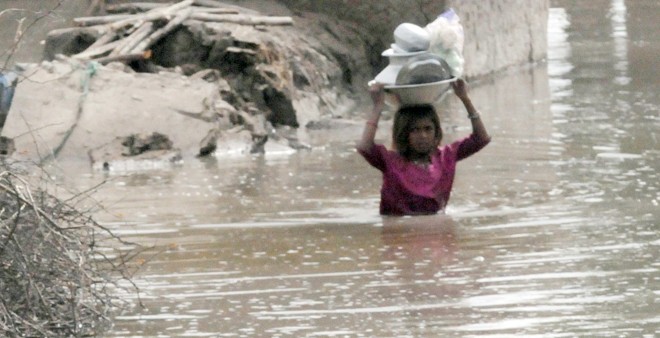

In face of the human-environment nexus, environmental problems are intensifying as socio-economic activities gain momentum with the passage of time. To establish a relationship between development and environment, environmentalists world over are striving hard to address environmental degradation.
A point has now been reached where environmental degradation has attained a top slot on the global agenda. It is considered an issue requiring immediate measures, solutions, and deliberations on the human environment to establish a relationship between environment and development.
Keeping in view the importance of wildlife, the United Nations declared March 3 as World Wildlife Day which is a new addition to the list of the world environmental days so as to highlight the importance of wildlife and the threats confronting it. Our country is bestowed with mammalian and avian diversity inhabiting a great variety of habitat and ecosystems with associated flora and fauna.
Wildlife, which is an integral part of the natural environment, is at the mercy of human beings. Wildlife has multidimensional importance ranging form socio-economic benefits to ecological functions and services. It is our recognition at the international, national, and regional level i.e. Markhor is our National Animal, Chukor is our National Bird, Deodar is our National Tree, and Jasmine our National Flower.
As the trend indicates, it would be a nightmare if the list of environmental days keeps expandingsimply to force all environmentalists and conservationists to face the alarming situation. That point of time should not come when the world community begins to celebrate additional environmental days such as World Snow Leopard Day, World Falcon Day, World Dolphin Day, World Deodar Day, World Turtle Day, World Houbara Bustard Day and so on because of the endangered categories of species.
The United Nations Conference on human environment at Stockholm in June 1972 was a pioneering attempt by the international community. It set forth guiding principles as international policy to inspire people of the world to protect the human environment, conceiving that man is the architect of his environment. A number of Multilateral Environmental Agreements (MEAs) and conventions bind humans all around the world to protect biological resources distributed over geographical lands in various ecosystems.
Some of the important MEAs and conventions include Convention of International Trade of Endangered Species of Flora and Fauna (CITES), Convention on Biological Diversity (CBD), Convention on Migratory Species (CMS), Bonn Convention and the Ramsar Convention which provide policy framework and guidelines for conservation, preservation, and management of resources.
Similarly, several environmental days are celebrated every year including World Wetlands Day (February 2nd), World Water Day (March, 22nd), World Earth Day (April 22nd), World Biodiversity Day (May 22nd), World Environment Day (March 5th), World Oceans Day (June 8th), World Day to Combat Desertification and Drought (June 17th), International Day for the Preservation of the Ozone Layer (September 16th), World Planting Day (October 22nd), International Mountain Day (December 11th) etc. Besides, the world community has declared the 2010-2020 as the Decade of Biodiversity.
The environmental days are celebrated around the world to sensitise different target groups to mitigate human-induced imprints on the environment and ecological resources. But a very small circle of environmentalists, academicians, and conservationists know about the environmental days and their importance of designation by the world community. Generally, these days pass without adequate coverage and do not generate any interest amongst the general masses due to which the point of celebrating various environmental days cannot be comprehended. They do not lead to meaningful involvement of various target groups at different levels.
All this require sustainability and consistency in initiatives at large scale to broaden the outlook of general masses and ensure their participation effectively.
But the constant interaction and dependence of human beings on natural resources due to burgeoning human population and their multiplying demands have tilted the equilibrium. Upon an insight into the environment, one can safely assume that environmental degradation in various manifestations outweighs the fractional developmental and rehabilitation interventions in the long run that require resources, time and billion of rupees to mitigate the adverse impacts.
Human beings are mainly responsible for bringing rapid changes in the environment which quite often has adverse effects on the plant and animal life. Increase in human population, poverty, habitat degradation, illegal hunting and trade, lack of adequate developmental funds for research and management, lack of communities’ participation in resource conservation, over exploitation, and lack of awareness are the stumbling blocks in effective management of the natural resources.
Every year the state of earth’s resources is experiencing a downward trend despite the global environmental initiatives and concern. The earth is an abode for not only human beings but also millions of other biological entities interwoven in the complex web of life that benefit one another through their vital interaction directly or indirectly.
Success of any wildlife conservation programme is dependent on the attitude and support of the people in general and the students at the grass root level in particular. It is imperative to promote conservation education and awareness across the country. Following the wise-use philosophy and awareness will help perpetuate the resources for sake of future generations and ecological integrity to fulfill obligations under Multilateral Environmental Agreements and conventions.